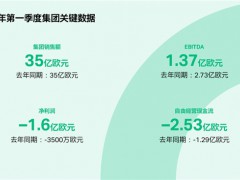???? 據(jù)安迅思3月7日消息稱,目前石油巨頭正面臨兩難的困境。它的主要產(chǎn)品是石油和天然氣,能源轉(zhuǎn)型正在迅速進(jìn)行中。公用事業(yè)公司正在建設(shè)太陽能和風(fēng)能發(fā)電能力,電動汽車電池廠正在建設(shè)中,初創(chuàng)企業(yè)正在建設(shè)充電站網(wǎng)絡(luò)。石油公司可能在哪里競爭?
????它們可以選擇涉足這些領(lǐng)域,事實上,包括道達(dá)爾、英國石油和殼牌在內(nèi)的許多歐洲石油公司正在這些領(lǐng)域全速前進(jìn)。
????與運輸燃料的長期前景相比,大型石油公司將石化業(yè)務(wù)視為一項關(guān)鍵的增長業(yè)務(wù),因此在石化業(yè)務(wù)上也做得很大。殼牌將擴(kuò)大其石化業(yè)務(wù),同時大幅削減煉油能力。
????但是,石油和天然氣公司在可再生能源方面是否具有競爭優(yōu)勢?他們有規(guī)模,并且習(xí)慣于進(jìn)行大規(guī)模的資本投資。但它們的核心競爭力一直是在油氣勘探和運營油氣業(yè)務(wù)——包括下游石化業(yè)務(wù)。
????那么,可再生能源在哪些方面發(fā)揮了石油巨頭的優(yōu)勢呢?
????氫很可能是解決方案–藍(lán)氫,它與CCS(碳捕獲和封存)一起在碳?xì)浠衔锷a(chǎn)中產(chǎn)生,以及由太陽能和風(fēng)能產(chǎn)生的綠氫。
????石油公司已經(jīng)在生產(chǎn)和使用氫氣方面擁有專業(yè)知識,并且具備將氫轉(zhuǎn)化為氨以進(jìn)行長距離運輸?shù)膬?yōu)勢。他們具有大規(guī)模處理氨的運營能力,并具有將其分發(fā)給全球客戶的物流網(wǎng)絡(luò)。
????ICIS的國際氨市場編輯Richard Ewing表示:“大型石油公司擁有規(guī)模經(jīng)濟(jì),在處理、現(xiàn)有基礎(chǔ)設(shè)施、存儲和物流方面擁有廣泛經(jīng)驗,以及在這個新的、大型的、令人興奮的和潛在的非常有利可圖的行業(yè)中擁有密切聯(lián)系。”
????“許多石油公司將在短期內(nèi)考慮使用藍(lán)氨,因為那里已經(jīng)有很多基礎(chǔ)設(shè)施,與投資新建的新項目(如綠色氫/氨工廠)相比,所需的資本支出要少得多,因為新項目有很多技術(shù)在等待開發(fā)。”
????曹海斌 摘譯自 安迅思
????原文如下:
????Hydrogen may be Big Oil’s low-carbon solution in global energy transition
????Here’s Big Oil’s dilemma. Its main products are oil and gas, and the energy transition is rapidly under way. Utilities are building solar and wind capacity, EV battery plants are under construction, and start-ups are building networks of charging stations. Where might oil companies compete?
????They could choose to play in these areas, and indeed a number of European oil companies – including Total, BP and Shell – are going full speed ahead on these fronts.
????Big Oil is also going big in petrochemicals, as it views this as a key growth business in contrast to the long-term prospects for transportation fuels. Shell will boost its petrochemicals footprint while it dramatically scales back refining capacity.
????But do oil and gas companies have a competitive edge in renewables? They have the size and are used to making large-scale capital investments. But their core competency has been in oil and gas exploration and running hydrocarbon operations – including downstream petrochemicals.
????So what renewable energy plays into the strengths of Big Oil?
????Hydrogen is likely the solution – blue hydrogen, which is produced in hydrocarbon operations along with CCS (carbon capture and sequestration), and even green hydrogen, which is produced by solar and wind energy.
????Oil companies already have the expertise in producing and using hydrogen in their operations, and are well placed to transform this hydrogen into ammonia for long-distance shipments. They have the operational capability to handle ammonia at large scale and the logistics networks to distribute it to customers worldwide.
????“The big oil companies have economies of scale, experience in handling, existing infrastructure, storage and logistics, as well as the contacts to participate in this new, large, exciting and potentially very lucrative sector,” said Richard Ewing, international ammonia market editor at ICIS.
????“Many oil companies will look at blue ammonia in the short term as there is already much of the infrastructure there, and there is less capex [capital expenditures] needed than investing in a completely new project like a green hydrogen/ammonia plant, where a lot of the technology is still under development,” he added.







